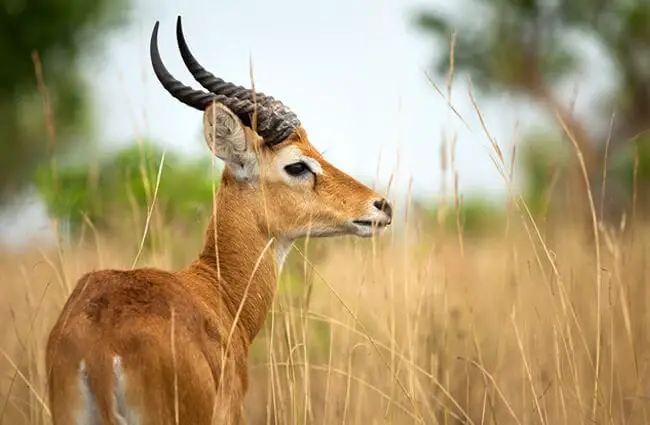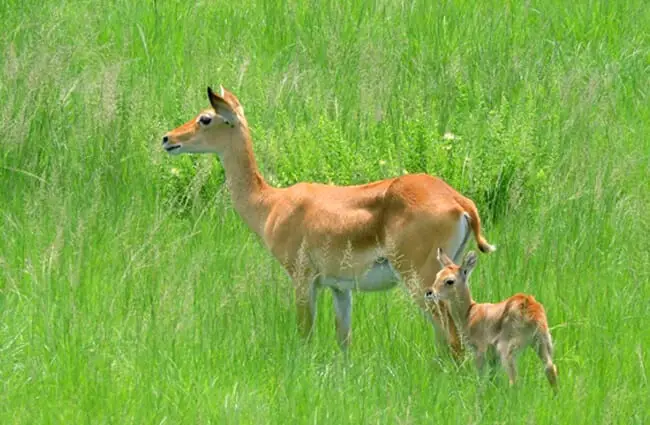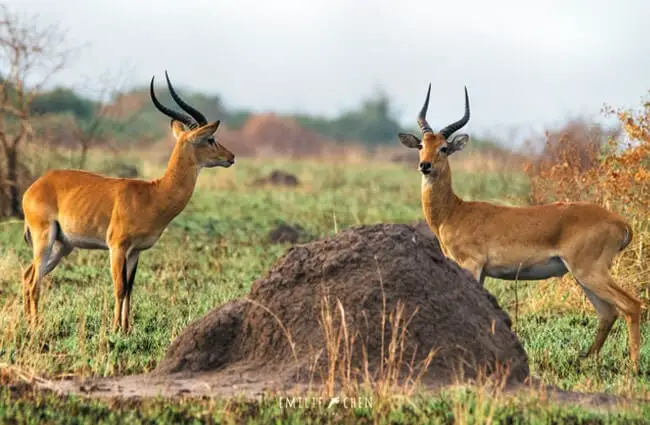The African savanna and woodlands resonate with the understated elegance of the kob—a medium‑sized antelope that plays a crucial role in its ecosystem. Often overlooked in favor of more flamboyant wildlife, the kob deserves a closer look. This guide delves into the world of the kob, exploring its habitat, behavior, diet, reproduction, and its place within the intricate web of life.

Understanding the Kob
The kob, scientifically known as Kobus kob, is a member of the family Bovidae. Several subspecies exist, including the Ugandan kob, Lord Derby’s kob, and the white‑eared kob, each adapted to its specific environment. These graceful animals are characterized by a reddish‑brown coat, contrasting white markings on the face and rear, and elegant, lyre‑shaped horns that appear only in males.
Habitat and Distribution
Kobs are found across the grasslands, savannas, and woodlands of Central, East, and West Africa. They prefer areas near water sources such as rivers, lakes, and swamps. The Ugandan kob inhabits the grasslands and woodlands surrounding Lake Victoria and the Nile River. Lord Derby’s kob thrives in the seasonally flooded grasslands of Central Africa, while the white‑eared kob occupies more forested areas of West Africa. Their distribution is largely dictated by the availability of suitable grazing land and water.

Physical Characteristics
Adult kobs typically stand between 80 and 100 centimeters tall at the shoulder and weigh between 60 and 120 kilograms. Males are generally larger than females and possess horns that can reach up to 50 centimeters in length. These horns are used for display and competition during the mating season. Their coat provides excellent camouflage in the grasslands, helping them to evade predators. Kobs are also known for their distinctive white markings, which vary slightly between subspecies. Their long, slender legs allow for quick bursts of speed when escaping danger.
Behavior and Social Structure
Kobs are highly social animals, typically forming herds that can range from a few individuals to several hundred. These herds are often segregated by sex: males form bachelor groups, while females and their young form separate groups. During the mating season, males establish territories and compete for access to females.
Diet and Foraging
Kobs are herbivores that primarily feed on grasses and herbaceous plants. They are selective grazers, preferring young, tender shoots, but also consume leaves, fruits, and occasionally aquatic plants. While they are often found grazing in open areas, they readily move into denser vegetation for cover. By controlling plant growth, kobs help maintain the health of grasslands and prevent the overgrowth of certain species.

Reproduction and Life Cycle
Kobs typically breed during the rainy season, when food is abundant. Males establish territories and perform elaborate displays—including vocalizations, scent marking, and ritualized fighting—to attract females. Gestation lasts about seven to eight months, resulting in the birth of a single calf. Calves are precocial, standing and walking shortly after birth.
Raising the Young
Calves remain dependent on their mothers for several months, nursing and following them closely. Mothers actively defend their calves against predators. Calves usually begin grazing on solid food around three months old, but they continue nursing until they are six to eight months old. Young kobs reach sexual maturity at about two to three years of age.

Ecological Role and Interactions
Kobs serve as an important prey species for predators such as lions, leopards, hyenas, and wild dogs. Their grazing also shapes their environment by maintaining plant diversity in grasslands and savannas.
Coexistence with Other Species
Kobs often share grazing areas and water sources with other herbivores like zebras and wildebeest, but they occupy slightly different ecological niches. Zebras tend to graze on coarser grasses, while kobs prefer tender shoots. Mutualistic relationships also exist; for example, oxpeckers feed on ticks and other parasites found on kobs, benefiting both species.

Kobs and Humans
In many parts of their range, kobs have historically been hunted for bushmeat and hides. While hunting pressure has decreased in some areas, it remains a threat elsewhere. Habitat loss due to agriculture and human settlement is a major concern. Conservation measures—including protected areas and anti‑poaching patrols—are essential to ensure the long‑term survival of these graceful animals.
Encountering Kobs in the Wild
When encountering kobs in the wild, observe them from a distance and avoid approaching too closely. Sudden movements or loud noises can startle them and cause them to flee. Respect their space and allow them to continue their natural behaviors.
Deeper Dive: Subspecies and Evolutionary History
The three recognized subspecies—Ugandan, Lord Derby’s, and White‑eared—each exhibit unique adaptations reflecting their environments. The Ugandan kob is known for dramatic lekking displays, while Lord Derby’s kob is adapted to seasonal flooding. Evolutionary studies suggest that kobs diverged from other Kobus species relatively recently, around one to two million years ago. Fossil evidence is limited, but ongoing research continues to clarify their evolutionary history.

For the Zoologist and Zookeeper
In captive settings, kobs require spacious enclosures that mimic their natural habitat, including grasslands, woodlands, and access to fresh water. Their diet should consist of high‑quality hay, supplemented with browse and formulated feeds. Regular veterinary care is essential to prevent and treat common diseases. Behavioral enrichment—such as opportunities for social interaction and foraging—is crucial for maintaining their well‑being. Careful consideration must be given to social dynamics within the herd to ensure compatibility among individuals. Monitoring breeding success and calf survival rates is also vital for effective conservation management.
The kob, though often overlooked by casual wildlife enthusiasts, is a vital thread in the tapestry of savanna life. Understanding its behavior, ecology, and conservation challenges is essential for ensuring that future generations can continue to witness the grace and beauty of this remarkable antelope.

![Red Angus Closeup of a beautiful Red Angus cowPhoto by: U.S. Department of Agriculture [pubic domain]https://creativecommons.org/licenses/by/2.0/](https://animals.net/wp-content/uploads/2020/03/Red-Angus-4-238x178.jpg)




![Red Angus Closeup of a beautiful Red Angus cowPhoto by: U.S. Department of Agriculture [pubic domain]https://creativecommons.org/licenses/by/2.0/](https://animals.net/wp-content/uploads/2020/03/Red-Angus-4-100x75.jpg)

